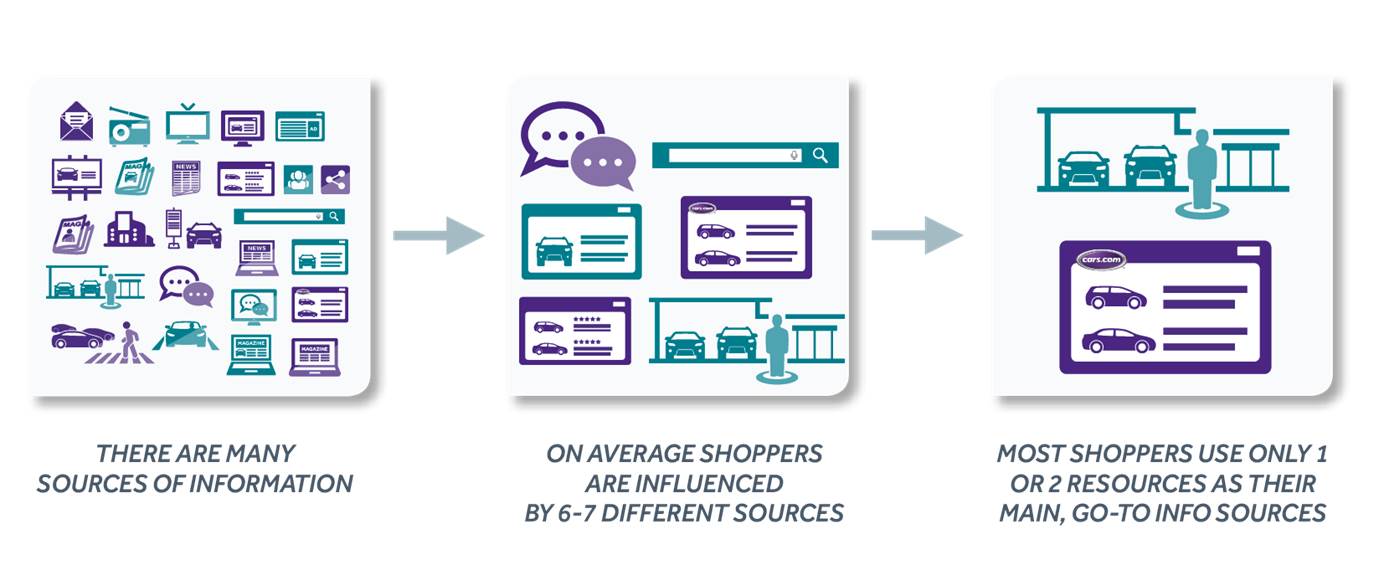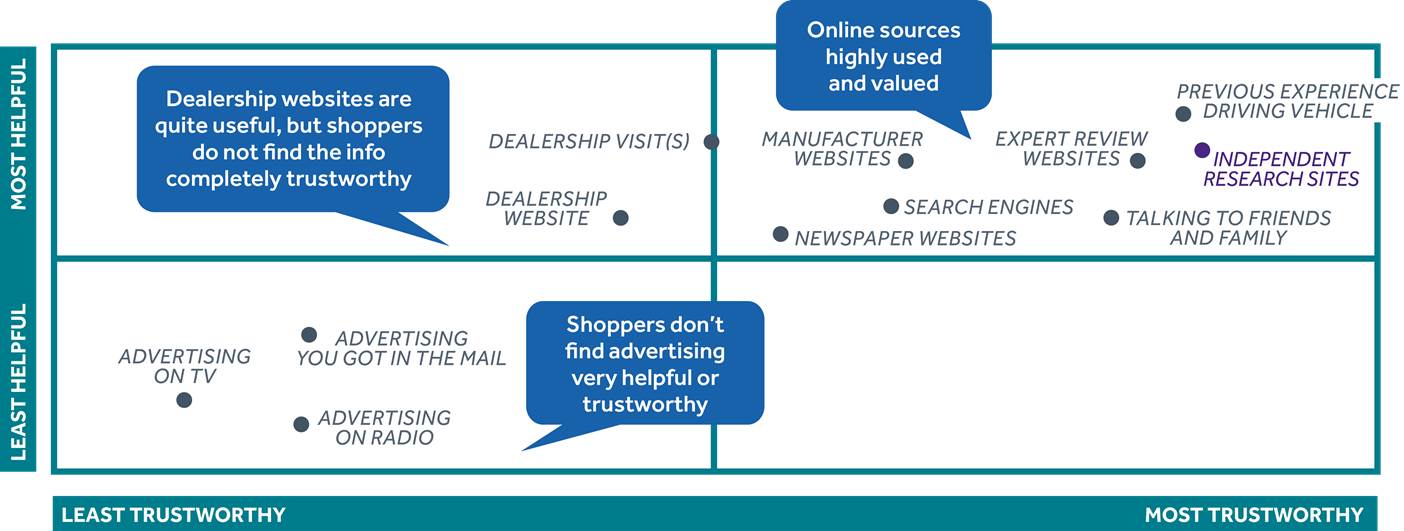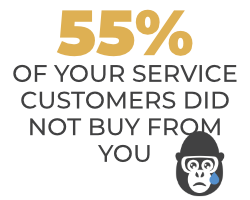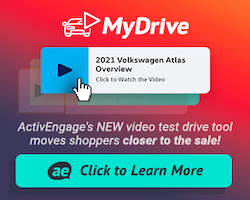For the past three years, Google’s Zero Moment of Truth has been a pillar of the automotive industry. Wedged into nearly ever conference workshop and lauded by trainers, vendors and dealers alike, the groundbreaking study shed light on the multi-faceted journey car shoppers take every day when purchasing vehicles.
With tangible proof of the importance of things like online research, reviews and excellent customer service, we were forced to take a step back and put our consumer hats on, to realize that many of our greatest marketing challenges were right in front us waiting to be solved.
But where ZMOT starts to answer the what, it stops short at the why – why do car shoppers use the tools they use to make decisions?With so many moving pieces, how do they all fit together in the minds of consumers?
This is to say that car shopping is not simply a summative equation; reaching a customer 18 or 24 times in various places does not equal a car deal. Repetition and consistency are essential – they’re the building blocks of marketing – but so are context, usefulness and trust. And that’s what our latest research digs into.
Rather than car shopping activities (e.g. seeing a printed ad, watching a video online), which can be done in multiple places, our new study, The Digital Influence: How online research puts auto shoppers in control, looks at the individual tools, platforms and real-life situations car shoppers use to inform and validate their purchases.
Fewer, more-relevant sources of information
Consumers are overwhelmed. From the time they open their computers to start the day to the time they get home and flip on the TV before heading to bed, they’re exposed to advertisements. And you are too.
How many commercials did you fast-forward last week? How many emails did you notice but scroll past?

The interesting finding is that we don’t tune out everything. Instead, we, as consumers, have become extremely skilled at passing by the information we don’t find relevant and grabbing the information we do. Our study shows that even though the average car shopper is exposed to dozens of sources, they’re actually only influenced by about six or seven, and that’s the reason why.
More importantly, of those six or seven influencing sources, only one or two sources (i.e., platforms, websites, experiences) are used as primary decision making tools. Meaning that when a consumer finds a tool that meets their needs for a specific task, they depend on it almost exclusively.
Trust, helpfulness and the automotive ecosystem
You’re probably thinking to yourself, “If shoppers only need to use one or two sources to make a decision, why can’t I just put my cars on those platforms and call it a day?”
If only it was that easy.

Our study shows us that shoppers view traditional advertising, dealership websites, research sites and other information sources very differently in terms of trust and helpfulness. While some platforms, like independent research sites, are more efficient than others, all sources play a unique role in helping consumers move from initial consideration to purchase. The reason is context.
What a shopper expects to learn from an OEM site is different from what they expect to learn from a dealership visit; what a consumer hopes to gain from speaking with a family member is different from what they expect to see in an expert review from an independent research site. The trick is for the central messages, regardless of who’s sharing them, to be as complementary and consistent as possible.
Let’s say you run a Chevy dealership and all of the manufacturer’s ads promote the new Malibu’s 4G LTE wifi feature. A potential customer visits Cars.com to read more, locates the highest-rated dealership within 20 miles and goes to test the signal first-hand, but your sales staff doesn’t have a clue about the technology. There’s a disconnect between what the consumer expects to gain from visiting the dealership and what they actually encounter. You’ve probably just lost a customer.
With influencing points throughout the shopping process, if any single step falters, it has the potential to drastically shift the path of the buyer.
Giving up the keys
 We like control in our business.
We like control in our business.
From the colors on our website to the layout of our lot, we’ve spent decades building up our brands, cementing the idea that if we yell loud enough, shoppers will come in and buy a car from us, no one else. That if a prospect sends us an email or steps onto our lot, they’re ours. But it doesn’t work like that, and this research reinforces why.
To car shoppers, your dealership isn’t only your website or an email conversation or your OEM’s latest ad or your reviews on Cars.com. It’s a byproduct of all of these things and more.
Think about that.
Rather than kick the wind, be part of the conversation. Consumers are behind the wheel now, but you can ride shotgun if you do the right things online. Establish a strong presence on the sources that are most relevant and trustworthy, and match it with a great experience in the showroom. There’s not a single silver bullet, but if you put all the pieces together, you can make sure your dealership is on the offensive at decision time.
[slideshare id=38709173&doc=cars-140904125637-phpapp01]
3 things to do today
Match messages: The key to building trust with consumers is matching digital and analog marketing messages – they’ve got to be as complementary as possible. Take 30 minutes and put yourself in your customer’s shoes. Shop your dealership, or better yet shadow a friend. How does your traditional advertising, dealership website and in-store experience match up to your manufacturer’s key messages, as well as your presence on independent research and review sites?
Talk to your team: With smartphone in hand, shoppers at the dealership say, “I know as much you do. I can validate anything you tell me.” If you’re giving one message on the phone or online, and then a completely different message when a prospect steps on the lot, you’re setting your dealership up to fail. Talk to your sales team and make sure they’re consistent with the information they provide potential customers.
Get the word out: Do you share your dealership’s CSI scores or online reviews with customers? If not, start building trust by promoting them across every channel you can. Link to them from your website, share them on profile pages and put up POS materials that let customers know you’re proud to share your track record of excellent service.
Now that’s a lot to digest. If you want to learn more about our study, tune in to our recent webinar where Cars.com analyst Simon Tiffen and I break down the research even further. Listen here.
Questions:
If you’re already performing the any of the recommended 3 thing to do today, what kind of results are you seeing from doing so?






